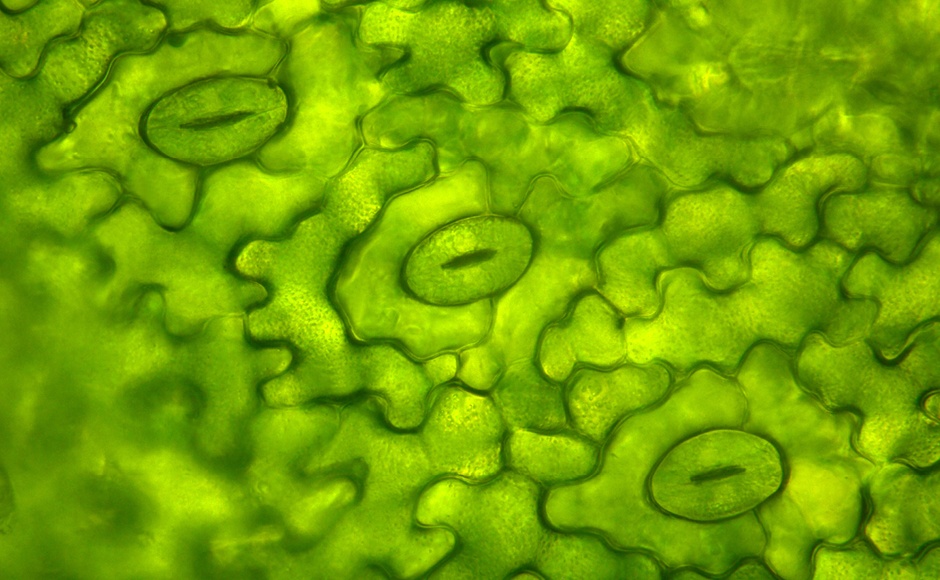
Stomata are pores constituted by two cells called: Guard cells. Guard cells are hydraulic valves making possible stomata closure and opening.
Stomata open or close depending on different factors: Light intensity, light quality, temperature, leaf water status, and intracellular CO2.
Stomata opening and closure
Water relations in guard cells follow the same rules as other cells: Water always moves from higher potential to lower water potential.
Guard cells can take in sugars, potassium, and chloride ions. The increase of solutes induces the entry of water across the guard cells membrane. As the water goes in the volume of cells starts to increase, promoting stomata opening. On the other hand, chemical reactions can also provide signals to remove water and ions from water cells, promoting stomata closure.
Changes in chemical reactions are regulated by different factors that we usually manage inside growing systems. Therefore the importance to understand how different environmental factors can affect stomata behavior which can of course have a direct effect on photosynthesis, nutrient uptake, and more.
Some important factors affecting stomata behavior are Light, water content, temperature, mineral content, and CO2.
Light
Light is one of the most important signals to promote stomata opening. Light quantity and quality can affect this process. Blue and red lights are linked to stomata opening. Particularly blue light is recognized as the light quality promoting potassium movement inside guard cells, creating conditions to promote water movement inside guard cells via osmosis.
Water content in epidermal cells
Water content from cells closer to guard cells can also affect stomatal opening and closure. For example, low humidity or doubt can affect the water content of surrounding epidermal cells, reducing the water potential of guard cells and promoting stomata closure.
Temperature
An increase in temperature cause stomata to open, when air temperature increases plants initiate a cooling mechanism by transpiration involving stomata opening
Mineral content
Mineral content can also affect stomatal behavior. Potassium is one of the most important elements linked to stomata regulation. Osmotic pressure in guard cells changes depending on K ios present in the cell as a response to different signals. Also, research supports that nutrient deficiencies can also affect stomata opening. Nitrogen and Phosphorous are two elements where deficiencies are linked to dysfunctional stomata behavior.
Carbon dioxide (CO2)
We know stomata are in charge of taking CO2 to initiate photosynthesis. Therefore CO2 concentration inside of the plant will also have an effect on stomatal behavior. As photosynthesis occurs and CO2 inside of the leaf starts to fall plant will open stomata in order to have more CO2 available to be fixed
Inside growing systems, we have the power to manage all variables affecting stomatal behavior. Sometimes we tend to get used to managing very practical information regarding system management, following “recipes” on how to control environment variables. However, is always important to go back to basic information in order to truly understand what is going on with our plants. As we have a better understanding then all measurements and decisions taken in our systems will be more accurate.
Understanding plant production systems along with basic plant physiology will always be a great strategy to succeed in horticulture!


